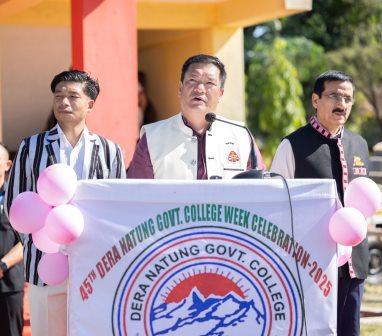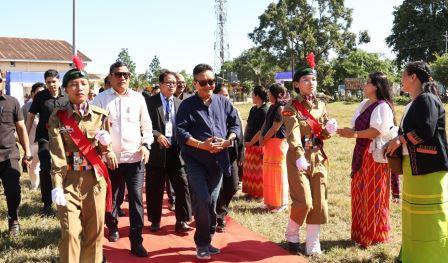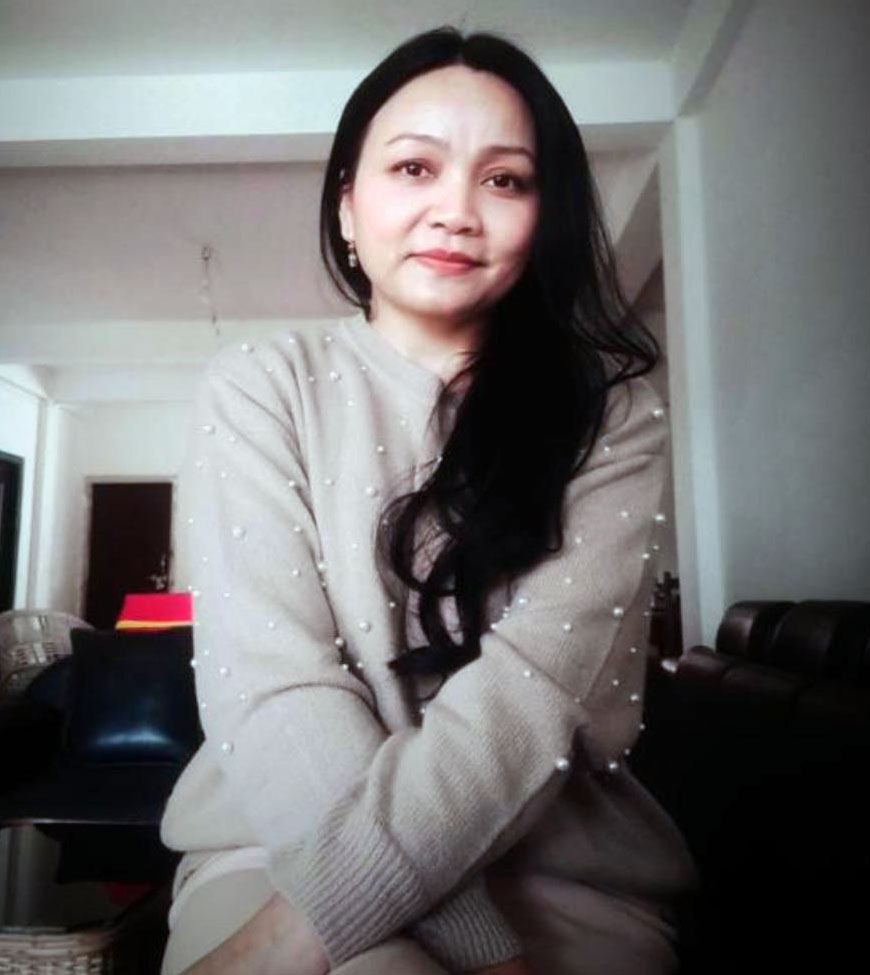-
Cadet death: Family allege harassment by seniors, demands justice
-
APCC raises safety concerns in educational institutions
-
POCSO court sentences man to 20 years in sexual assault…
-
Senior teacher found dead in quarters
-
Air cargo services resume from Itanagar airport
-
Commissioner Finance reviews centrally sponsored schemes in Tirap
-
Cadet death: East Siang Police arrests 3 Sainik School staffers
-
 CM lauds DNGC for contribution to higher education over 46…
CM lauds DNGC for contribution to higher education over 46…
-
 Sona stresses on holistic education to truly nurture future generations
Sona stresses on holistic education to truly nurture future generations
-
High school student found dead in school bathroom, no signs…
ITANAGAR, Jul 21: Chief Minister Pema Khandu today released the book “Media Representation and Accessibility of the Puroiks” at his office, highlighting ongoing efforts to bring visibility to one of Arunachal Pradesh’s least represented indigenous groups.
Authored by Dr. Prem Taba and RGU Professor Kh. Kabi, the book is based on Dr. Taba’s PhD research conducted under the supervision of Prof. Kabi, Head of the Department of Mass Communication. The foreword is contributed by noted media academician Prof. Sisir Basu.
The book presents an in-depth study of the Puroik community, focusing on their social, economic, and cultural challenges, as well as their struggle with historical marginalization. It documents stories of exploitation, traditional practices, and the lack of mainstream media attention that has contributed to their continued exclusion.
Launching the book, Khandu acknowledged the relevance of such research, stating, “The book sheds much-needed light on marginalized communities. Through its ethnographic depth, it vividly captures the lives of the Puroiks, one of the most underrepresented indigenous groups of Arunachal Pradesh. As a government, we have taken concrete steps to address the historic inequities faced by the Puroik community, including the constitution of the Puroik Welfare Board, skill development and livelihood programs, and educational support.”
During the event, he advised Dr. Taba to submit a detailed report of his research findings directly to the Chief Minister's Office.
He stated that a comprehensive submission would enable the government to consider appropriate policy interventions based on the book’s recommendations and evidence, thereby supporting informed policymaking for the welfare of the Puroik community.
The Chief Minister further congratulated Dr. Taba on his contribution to media studies and indigenous documentation, expressing hopes for more work in this direction to amplify the voices of marginalized communities.
Recommendations in the book include digital literacy, bilingual education, access to microloans, mental health support, and empowering platforms for community storytelling.
The authors also critique the limited effectiveness of certain government schemes and propose collaborative efforts involving the government, civil society, and the Puroik community to promote empowerment and preserve their cultural heritage.

Kenter Joya Riba
(Managing Editor)She is a graduate in Science with post graduation in Sociology from University of Pune. She has been in the media industry for nearly a decade. Before turning to print business, she has been associated with radio and television.
Email: kenterjoyaz@easternsentinel.in / editoreasternsentinel@gmail.com
Phone: 0360-2212313

